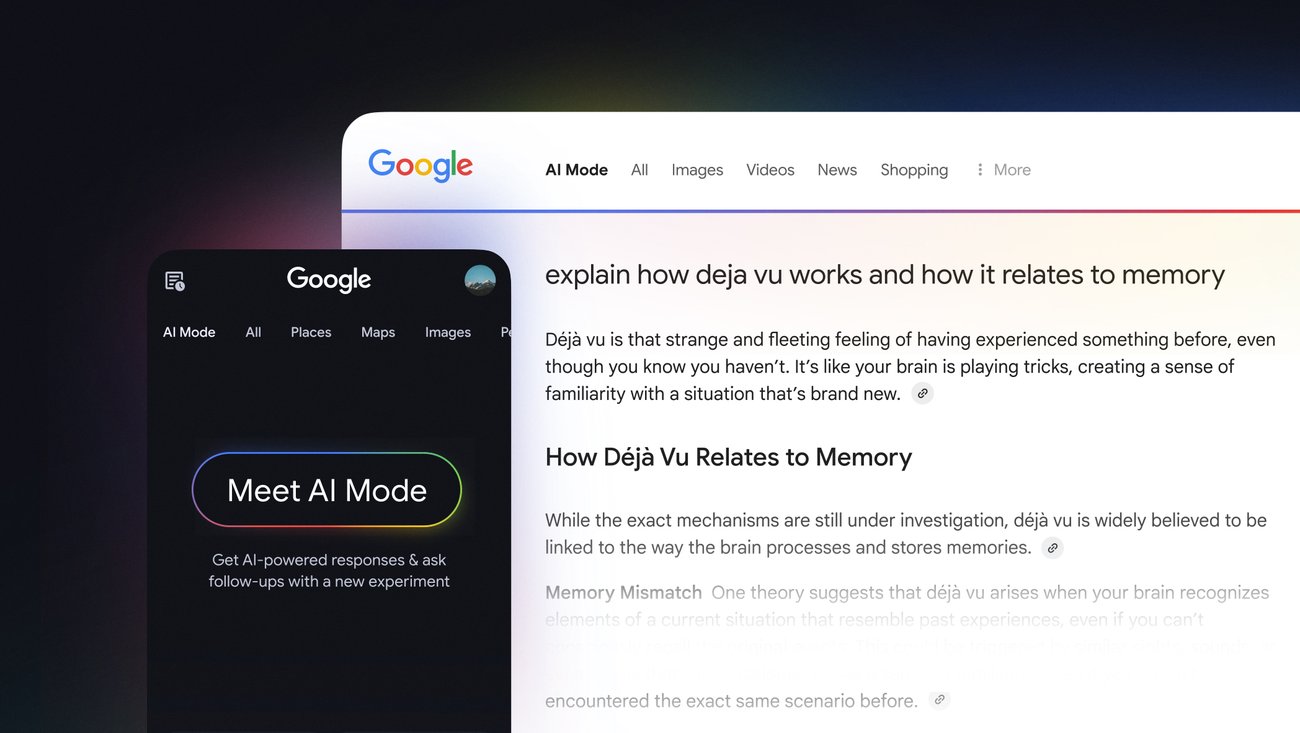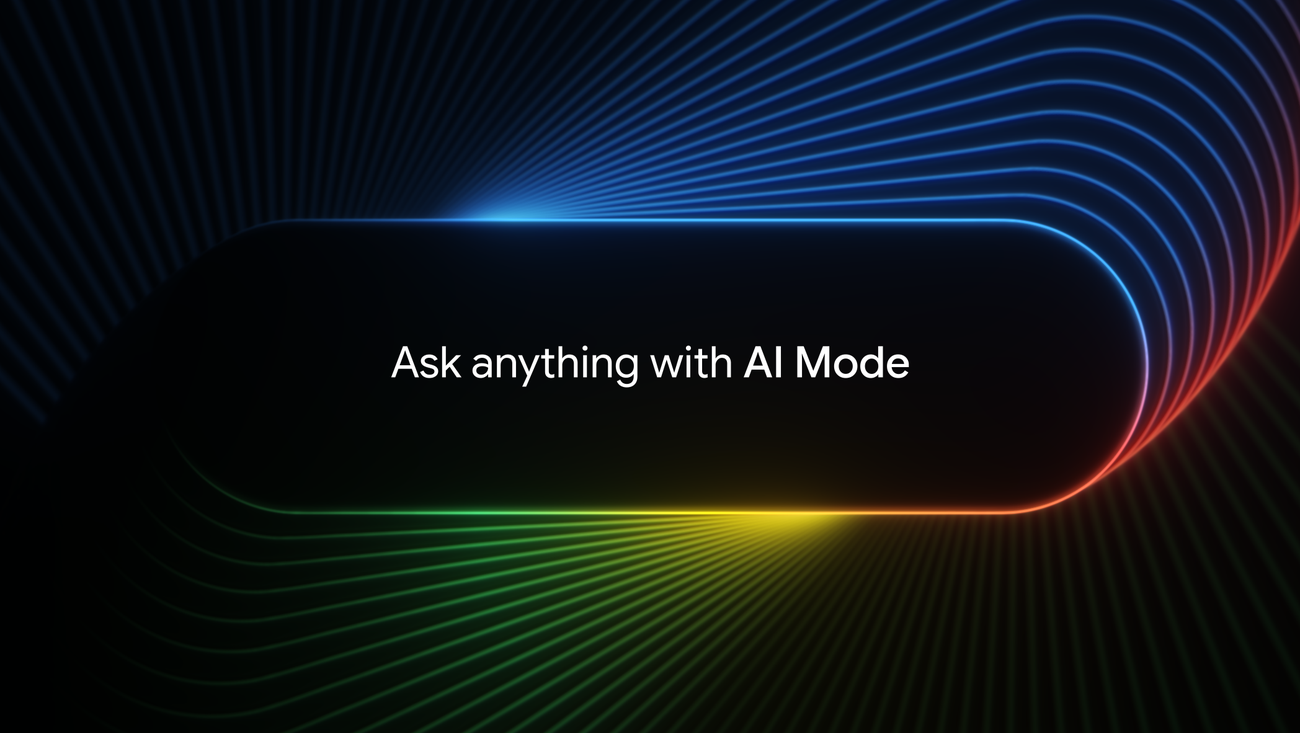Google has officially brought it’s AI Mode to UK users. Rolled out on July 28th, 2025, this new update will fundamentally change how people look for and interact with content in this new world of search. Built on Google’s Gemini AI model, AI Mode goes far beyond traditional search by interpreting longer, more complex queries and responding with a single, AI-generated summary pulled from multiple sources.
So, where does that leave brands? And what does this mean for the future of search?

What is Google AI Mode?
AI Mode is demonstrating a shift towards a more natural, human-like search experience. Users aren’t just typing in isolated keywords – they’re asking complex, human-like questions and adding follow-ups. So, what do we know about this new tool?
Query fan-out: When a question is asked, AI mode uses a ‘query fan-out’ technique, which essentially means that it performs several queries simultaneously and then summarises the findings into a unified answer. Users can also then ask follow-up questions, as AI Mode will retain context from previous prompts.
Multi-modal inputs: AI Mode allows people to search via text, voice or images – and receive responses in a variety of formats.
Task automation: Need to book transport, contact businesses or reserve a table? AI Mode can handle it.
Ad integration: Ads are already live on desktop in AI Mode and AI Overviews, with mobile roll out later this year.
In the US and India, where AI Mode was introduced first, Google reports promising results with:
· A 1.25% user adoption so far
· Sessions typically 38% longer
· 80+ million engaged users
· Expansion to 20+ languages by the end of 2025

How will AI Mode impact brands?
Search is evolving fast, and if brands want to stay competitive then they need to adapt – fast. Although we don’t yet know a lot, here’s what the AI Mode rollout means so far:
Search journeys are getting longer (and smarter)
AI Mode encourages extended, layered queries. However, although this means queries are becoming more complex, zero-click searches are also on the rise – meaning there will likely be a loss of initial traffic for brands.
Measurement is shifting
Google’s AI Mode traffic doesn’t currently appear in Search Console or Google Analytics. As a result, visibility is limited. That said, you can filter Google Search Console data by longer queries (10+ characters) to get an overview of conversational search queries.
A multi-modal approach
Multi-modal input means your assets (images, video and text) all need to be crawlable, structured and compliant with Google’s latest standards. If your content isn’t accessible to Google’s AI systems, it won’t surface in these new experiences.
Query fan out
The long-tail nature of search queries in AI Mode means answers will now be broken down into multiple sub questions, and users can ask follow-up queries since AI mode will retain context from previous prompts.
Preparing for AI-first search
So, how can your brand stay ahead of the curve? Let’s recap what we know:
Rethink your keyword strategy: Incorporate longer, question-style search terms into your content planning. Think about how your audience is going to change the way they search for information and consider this when completing keyword research and building a content calendar.
Optimise for multi-modal discovery: Ensure all assets are correctly tagged, formatted and accessible to crawlers.
Focus on technical SEO: Google AI requires structured data, fast-loading pages and clear semantics. Clear up your technical foundations to facilitate AI-driven discovery.
Watch the Ads rollout: We’re closely monitoring the roll out of Ads in AI Overviews by working with our US teams across dentsu.
Prioritise visibility: With zero-click searches increasing, brands need to shift their focus from pure traffic to visibility and brand presence. Being a part of the answer – even without the click – can still drive long-term value.
We’re still at the very start of an AI-search revolution. With longer, richer interactions being prioritised, the power of context (not just keywords) will start to bleed through even more so than before. Whilst this may diminish click-through volume initially, it will strengthen the quality of clicks received. Over time, visitors will be more informed, more intentional and more likely to convert once they reach your site.
Now’s the time to re-think your SEO strategy. Those that invest in natural, conversational-led content and multi-format assets with technical excellence will be the ones that win in this new search landscape. Visibility will become an increasingly central metric, and brands that continue to put users first will stay competitive in amongst the chaotic world of search.
If you’d like to learn more, get in touch with the DX team today.

